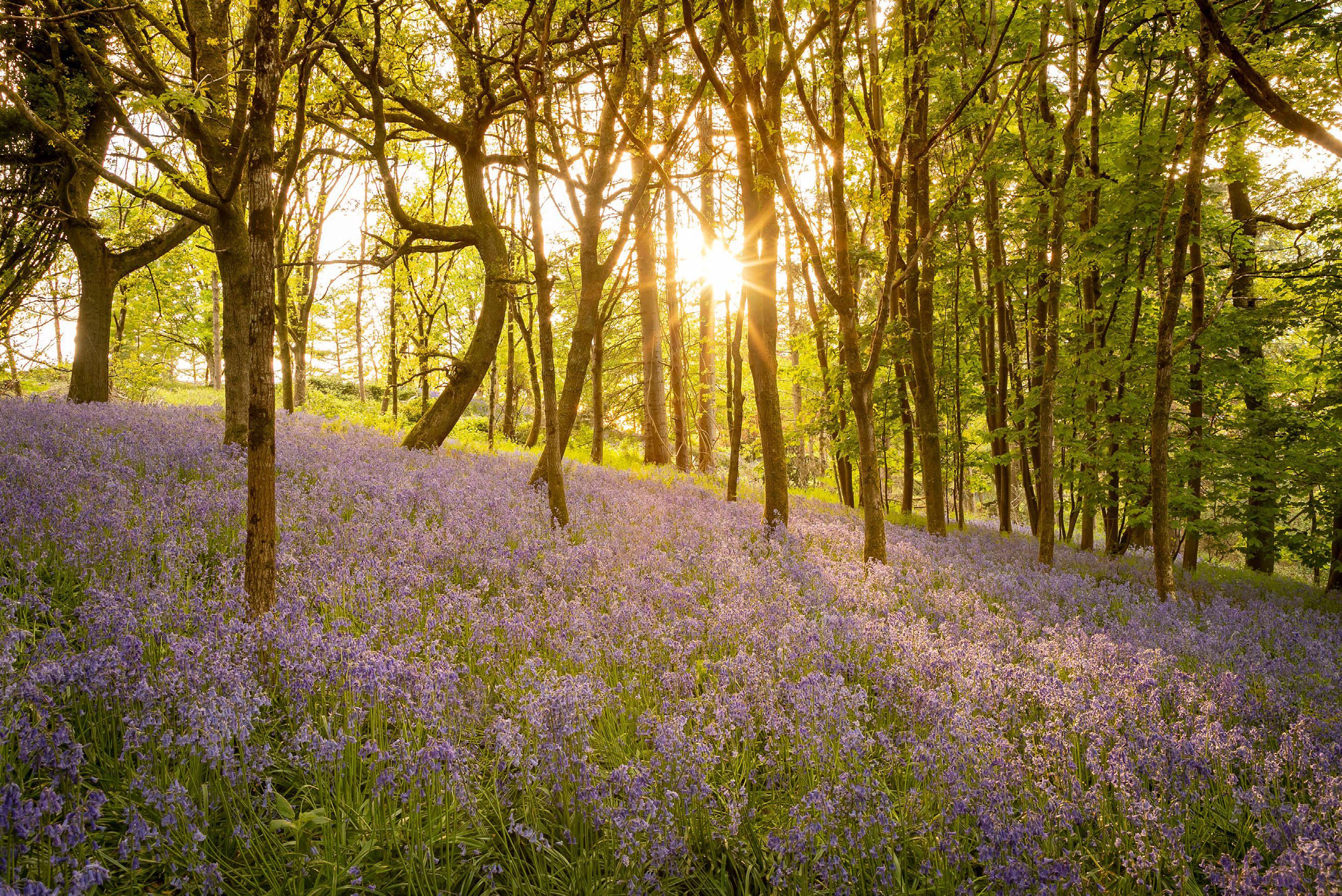
Spring is the time to shoot flowers in bloom, and a sea of bluebells in a forest are a real favourite of mine. It all comes down to a great location and soft sunlight when you’re photographing bluebells in woods. Plus some key Canon camera skills, of course!
It’s taken me a few years to find the best location in our local area. Although several woods near me have bluebells, it wasn’t until last year that I found this fantastic forest on top of a hill, with big blankets of bluebells filling large areas of the forest floor.
For the best, densely populated areas of bluebells, you ideally need forests with thinner trees and less foliage lower down their trunks. This enables sunlight to reach the flowers so they bloom and flourish in Spring. Bluebells in the UK usually flower around late March to mid May, but it varies depending how mild it is come Spring. But you need to be quick! As soon as the forest canopies start to grow new leaves, the bluebells won’t get enough sunlight, and quickly disappear.
It’s best to find a forest that has defined edges, so the sun reaches inside to light the flowers, and also so that you’re not shooting inside a dark wood, and get a nicer, more photogenic and atmospheric scene.
You’ll also need to nail your Canon camera skills, using the right aperture and focal length, bracketing your exposures, and get your composition right for the best shots, as I show you over the following pages...
CANON SETUP SHOOT BLUEBELL FOREST SCENES
Learn the crucial Canon camera settings and lens tips for stunning flowery forest shots
SHOOT INTO THE SUNLIGHT
This story is from the Spring 2023 edition of PhotoPlus : The Canon Magazine.
Start your 7-day Magzter GOLD free trial to access thousands of curated premium stories, and 9,000+ magazines and newspapers.
Already a subscriber ? Sign In
This story is from the Spring 2023 edition of PhotoPlus : The Canon Magazine.
Start your 7-day Magzter GOLD free trial to access thousands of curated premium stories, and 9,000+ magazines and newspapers.
Already a subscriber? Sign In

The Art of Copying Art - James Paterson shows you how to use your Canon gear to capture artwork and paintings the right way with simple camera and lighting skills
Whether you want to capture a painting like the above, digitise old prints or reproduce any kind of canvas, there's real skill in capturing artwork with your camera. Not only do you need the colours to be accurate, you also need to master the spread, angle and quality of the light to minimise glare and show the work at its best.This painting by the artist Bryan Hanlon has a wonderfully subtle colour palette. To reproduce the painting in print and digital form, it needs to be captured in the right way.

Fright night
Canon photographer and digital artist Alexander loves to craft incredible fantasy scenes with a spooky horror twist

Sharpen your shots with DPP
Sharpening a digital image also increases contrast at the edge of details

CANON ImagePrograf PRO-1100
Deeper blacks, better bronzing, greater lifespan and 5G Wi-Fi -Canon's new printer is full of new tech, says

Canon's new 'kit lens' is actually a half-price f/2.8 trinity lens!
The Canon RF 28-70mm F2.8 IS STM lacks a red ring, but borrows premium features from its L-series siblings

DREW GIBSON
Pro motorsports photographer Drew on why he hasn't (yet) switched to Canon's mirrorless system, why old-school techniques can be the most reliable, and the lessons learned from more than a decade shooting the world's biggest car brands

Up in smoke
Make a smoky shape in Affinity Photo and get to grips with the amazing Liquify Persona under the guidance of James Paterson

Expand your creativity with Generative Fill
Photoshop's Al-powered feature brings revolutionary new tools to image editing. James Paterson reveals all...

Turn your images into vintage postcards
Wish you were here? Sean McCormack explains how you can give your summer photographs a vintage postcard look

The Angel Malibu
Light painting an American movie producer in the Wadi Rum Desert in Jordan was a highly unlikely evening out for David!